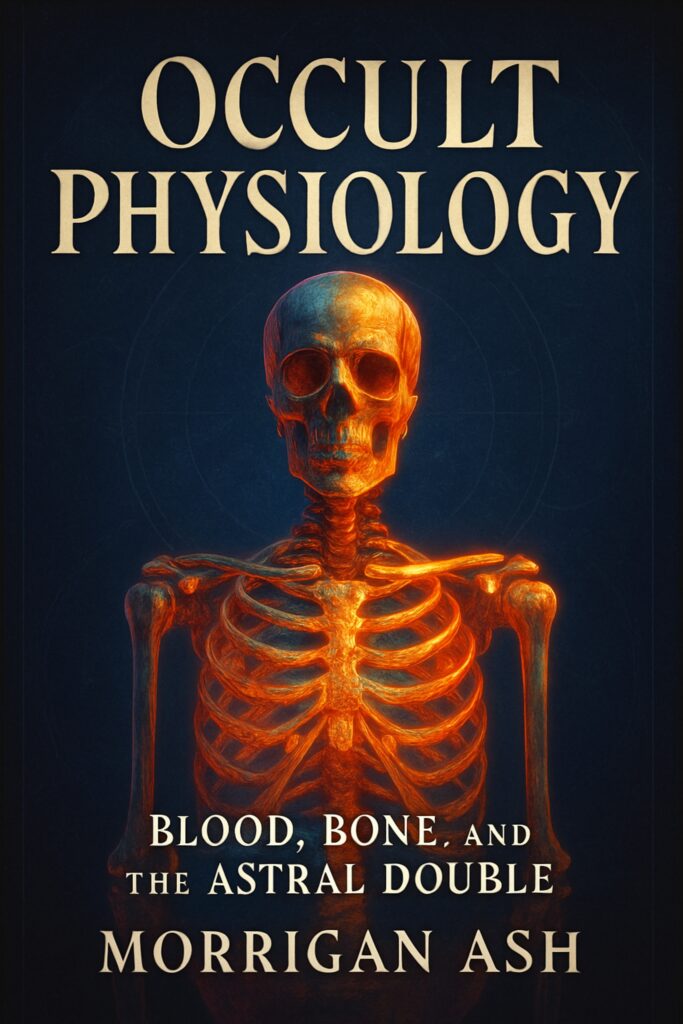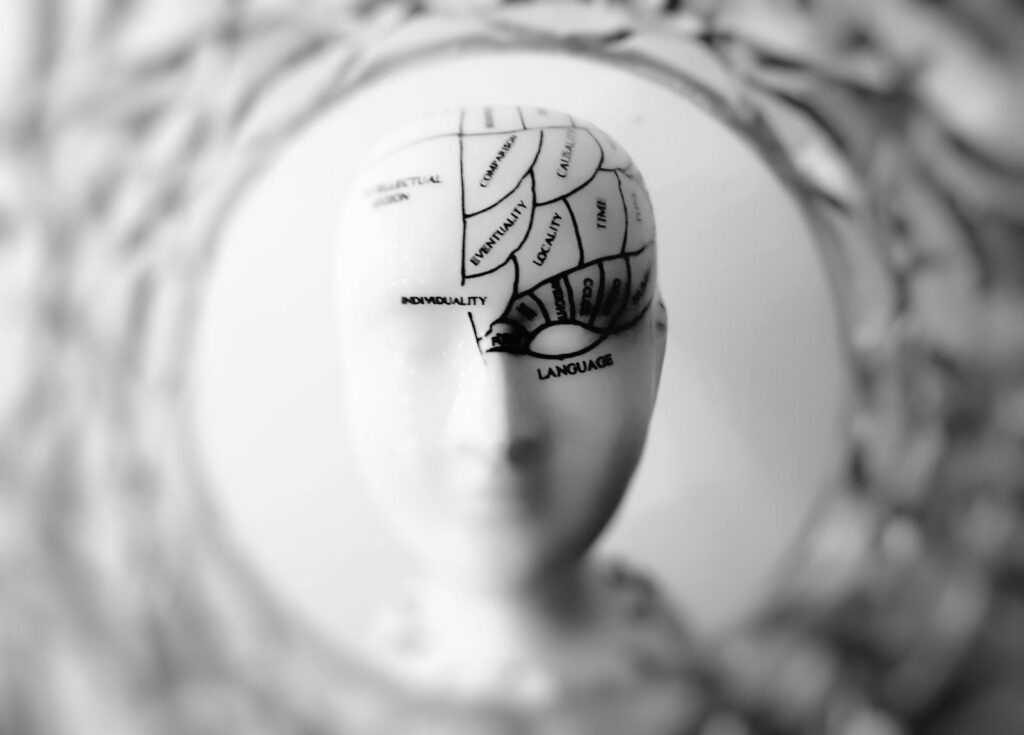Magicians collect tools like badges—athames aligned to planetary hours, bowls for moon water, incense calibrated to the rite. All of it can be beautiful, even useful. But the most volatile instrument you own was smuggled into your life at birth. It hums inside your skin. It throws sparks when you’re terrified and sings when you’re ecstatic. The nervous system is the lightning path of sorcery: a living lattice of electricity where every spell either ignites or dies. To master magick is to learn how to shape this storm.
The nervous system is not an inert conduit, not a neutral wire. It is temperamental, moody, exquisitely sensitive to rhythm and symbol. It is the current that makes ritual real. When the body’s voltage climbs and the channels open, the circle becomes a charged field; when the circuitry is numb or jammed, the grandest invocations land like dull thuds against a locked door. In the end, your results rise and fall with the state of your lightning.
Electricity in the Flesh
The brain doesn’t think in words; it thinks in fire. Neurons pulse with electrochemical bursts, ion gates snapping open and shut like tiny doors in a storm. Signals travel the body as living lightning—arcing across synapses, sweeping down nerves, striking muscle and gland. The old mystics were not wrong to speak of “fire in the head” or “serpents of light.” They didn’t have microscopes; they had sensation. And sensation told them that the soul speaks with voltage.
Once you truly feel this, ritual changes. Chant is no longer poetry; it is metronome. Swaying becomes a transformer. Drumming ceases to be theatre and turns into a rhythmic hammer, driving current deeper into tissue. You’re no longer pretending to summon power—you’re literally increasing the amplitude of signal. The shock of fear, the ache of longing, the sting of shame, the shiver of awe: each is an electrical signature. Sorcery rides these signatures the way a surfer rides a wave.
The Spine as Staff of Power
Every myth that places a rod, pillar, or world tree at the center of the cosmos is describing what your back already knows. The spinal cord is a vertical highway of signal, a royal road of lightning rising from pelvis to skull. When you stand like a thrown spear—crown lifted, sacrum heavy, breath wide—the staff conducts. When you collapse into yourself, the road kinks; traffic snarls; the storm scatters.
The body remembers this even when the mind has forgotten. There’s a reason initiations feel like alignment rituals: the spine becomes a wand. The smallest cues matter. The angle of your chin changes which tendons sing and which nerves open; the way you plant your feet shifts the quality of voltage you can carry. Call it kundalini or the Middle Pillar or the axis mundi—each is a language for the same phenomenon: the column of lightning that makes a human into an altar.
Two Currents, One Storm
Within the larger web of nerves, two grand moods contend. One sharpens the edges of the world; the other turns them soft. The first is the quickening surge that prepares you to fight, run, seduce, create, or erupt. The second is the slow tidal draw that dissolves your borders and widens your field of perception. The sorcerer knows both. The first current is the blade; the second is the chalice. Only the untrained try to live forever at one pole.
In practice, this means you learn to climb the voltage when power must be raised and lower it when the gateway is opened. You push the storm through your frame when the rite requires ignition, then you let it settle into a steady glow when it’s time to listen. Power without depth becomes manic spectacle; depth without power becomes languor. True workings ride the alternation: thunder, then silence; flash, then dark; a body bright as lightning and a mind black as a night lake.
The Vagus and the Voice
There is a great wandering nerve that threads from skull to gut, touching tongue, throat, heart, lungs, and viscera. When you hum, chant, whisper, or speak with deliberate rhythm, this nerve vibrates. The ancients baptized it with song and breath long before anyone named it. You can feel the difference at once: a room of nervous systems softening together as voices braid, the air itself thickening around a tone until the tone feels like a presence.
Ritual speech is a sonic key. It is not merely semantic. You are not convincing the universe with clever words; you are changing the state of your own circuitry with vibration. The voice is a tuning fork pressed against the temple walls of flesh. Get the tone right and the gate opens. Get it wrong and the spell sounds like a lecture.
Gnosis as Nervous Event
Every tradition worth its salt describes the same aperture: a moment when the usual narrator goes quiet and the world arrives in a single blaze. Chaos magicians call it gnosis; contemplatives call it samadhi; lovers call it falling apart in someone else’s hands. Neurologically, it feels like networks dropping out of the foreground, like snow in the head suddenly clearing. This is not anti-body mysticism—it’s a whole-body event. The storm simplifies. The chatter dissolves. Signal becomes pure.
You cannot claw your way into this; you must arrange the conditions and then stop interfering. Rhythm helps, breath helps, danger helps, beauty helps. Sometimes grief does it. Sometimes desire. The sign that you’re close is that time loosens its grip and the edges of your self feel porous. The sign that you’ve missed it is that you’re still arguing with yourself about whether it’s happening.
Trauma and the Frayed Wire
No one arrives at the altar with pristine wiring. The nervous system remembers what happened. It tightens around certain sounds and loosens around certain faces. It learns to jump at shadows or to fall asleep while awake. When the wire is frayed, voltage leaks. A rite that would otherwise strike like a hammer lands like rain. Other times the opposite occurs: the smallest spark sends the whole system into overload.
This is not a moral failure; it is physics with a history. The work then is repair. Sometimes the repair looks like cold water and heavy breath until the body trusts that it can carry charge. Sometimes it looks like shaking the animal free of old freezes. Sometimes it looks like meticulously cultivating gentleness so the storm has somewhere to land. Those who treat healing as optional end up slaves to the very forces they conjure. Those who treat healing as sacrament become conductors, not casualties, of their power.
Ritual as Nervous System Engineering
All real ritual is designed to sculpt state. Geometry sets attention. Scent strikes the reptile brain like memory. Flame hacks the eyes. Movement warms the wire. Music ties disparate bodies into one organism, a communal battery. Even the placement of objects is part of the engineering: edges, weights, colors, surfaces that the hand and gaze drink from like animals at a river.
When you realize this, your rites become laboratories. You stop arguing about belief and begin experimenting with conditions. You ask what arrangement of sound and silence, stillness and surge, density and space, makes this particular nervous system become the instrument you need for this particular outcome. You measure your success not by how hard you tried, but by whether the room changed temperature, whether your skin began to listen, whether the hairs rose of their own accord.
Erotic Voltage
No current is as eager to carry intention as erotic charge. The web of pelvic, spinal, and cranial nerves becomes a glowing network under arousal; the body is suddenly awake everywhere at once. This is why erotic energy saturates the old rites and why prudery breeds weak magick. The issue is never moral; it is electrical. Erotic voltage is a fast river. It either floods the banks and disappears or is guided into channels that irrigate the field.
To guide it, you must know when to hold and when to release. Holding builds pressure—heat rising along the vertebrae until it licks the edges of vision. Releasing throws a lightning bolt into the dark—intention smuggled inside a flash. Neither is superior; both are tools. What matters is whether your circuitry can carry the load without shorting, and whether your aim is worthy of the current.
Breath as Switch
Breath controls the weather. Quickened breath calls the storm; long, heavy breath invites the lake. The sorcerer is a breathsmith. You can feel it within a minute: how inhalation brightens the edges of the world and exhalation turns them soft; how breath in the belly brings weight and in the chest brings flash; how suspending breath is like gripping the lightning with your teeth.
This is why almost every serious lineage teaches breath before it teaches thunder. The breath is the switch, the rheostat, the dimmer and the amplifier. Untamed breath makes for accidental storms—glorious, sometimes, but unrepeatable. Trained breath makes for craft.
Grounding, Discharge, and the Art of After
Rituals that call storms without teaching aftercare breed scorched fields. When you raise charge, you must also learn to land it. The earth is a generous transformer; so are cold stone, heavy meals, slow walks under a night sky that does not care what you just did. Your nervous system is an instrument that needs tuning down as much as tuning up. It has to know, deep in its animal, that lightning can pass and the grass will still grow tomorrow.
In this, humility is a technology. Grandstanding to yourself keeps the current buzzing where it should be done; contempt for the tender body that carried you makes the wire brittle. Treat the body like the temple it is. It will repay you with storms on command.
Training the Lightning
There is no need for theatrics; the training itself is drama enough. Imagine devoting a season to the art of standing, just standing, until your spine feels like a wet rope turning into a steel cable lit from within. Imagine giving another season to learning your own voice until the first syllable of a chant opens the locks of your chest like a key. Imagine knowing exactly which gesture brings your mind to a blade, which image dissolves you into a bowl, which memory raises gooseflesh on command because you have rehearsed it lovingly into your nerves.
This is what separates spectacle from sorcery. Anyone can purchase rarified resins and exotic robes. Not everyone can make their body glow on purpose and go dark on command. Not everyone can flick the storm from blade to chalice and back again without tearing the room. That is not character or charisma; it is training the lightning to recognize your hand.
The Body as Thunder

You can invoke a hundred names and draw a thousand sigils, but every spirit will speak to you in the only language you actually understand: sensation. Every omen arrives as a ripple across nerve and muscle. Every change you ask of the world first touches the wires inside your skin. The nervous system is not background biology to the rite—it is the rite. It is the lightning path where power gathers, where trance opens, where intention is stamped into the dark.
If you want your workings to stop sounding like prayers and start sounding like weather, court the storm in your flesh. Learn its moods. Soften it when you must listen; sharpen it when you must move; discharge it when you must be human again. Treat the nervous system as the wand and the circle both. When you do, your magick stops asking for permission and begins to thunder.

